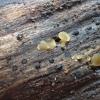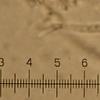
18-12-2025 21:17
Pol DebaenstThe identification took me to Byssonectria deformi

15-12-2025 07:09
 Danny Newman
Danny Newman
indet. Rutstroemiaceae sp. on unk. fallen leavesMc

19-12-2025 10:10
Patrice TANCHAUDBonjour, récolte réalisée en milieu dunaire, a

18-12-2025 17:23
 Bruno Coué
Bruno Coué
Bonjour,je serais heureux d'avoir votre avis sur c

18-12-2025 18:07
Margot en Geert VullingsThese plumes were found on rotten wood.They strong

17-12-2025 18:35
 Michel Hairaud
Michel Hairaud
Bonjour à tous/Hi to everyone I am passing along

15-12-2025 15:48
 Danny Newman
Danny Newman
Melanospora cf. lagenaria on old, rotting, fallen

15-12-2025 15:54
 Johan Boonefaes
Johan Boonefaes
Unknown anamorph found on the ground in coastal sa
Orbilia
Yannick Mourgues,
18-11-2019 00:03

Bonsoir.
A friend of mine has transmetted to me pictures of an Orbilia for ID. But with informations he has given to me, I don't know...
Data :
Ascus without croziers, apex rounded sometimes truncated. x8 spored.
Spores ovoides 3,7-4 x 1,5-2,1 um Q=1,8-2,5
Spores with a black point (guttule ?) at one end. The first four black points are directed to the base, the four to the apex.
Paraphyses capitate.
Any Idea ?
Hans-Otto Baral,
18-11-2019 08:53

Re : Orbilia
This looks much like the common O. tremulae. Earlier I would have said O. eucalypti, but O. tremulae differs in smaller spores not exceeding 4 x 2 µm, and often yellowish apothecia, together with a lack of drought-tolerance (growing on moist wood on the ground). Genetically it is very distant from O. eucalypti. Its anamorph also differs and matches morphologically Dicranidion inaequale.
Yannick Mourgues,
18-11-2019 09:21

Re : Orbilia
Thank's a lot Zotto.
Yannick



